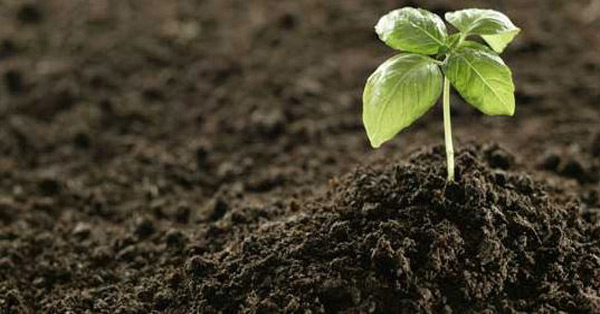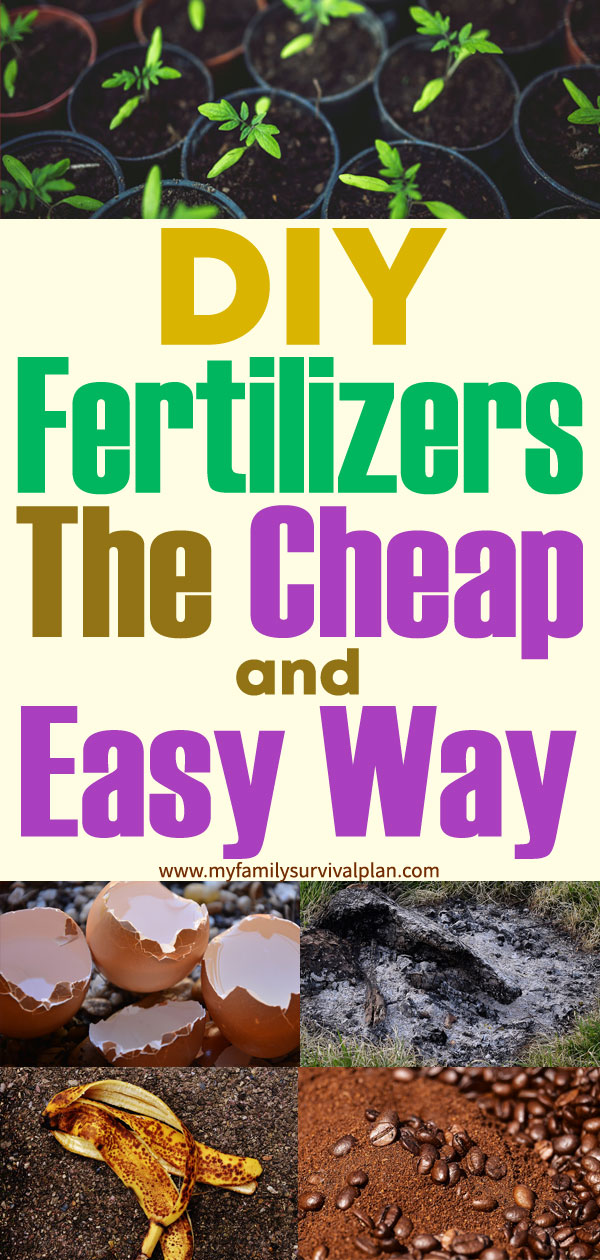Click Here To Join Our Telegram Channel for FREE daily tutorials!

As I’ve touched on the subject of survival gardening many times before and I’ve advocated growing your own, private vegetable or even fruit garden, I’m sure that my suggestions have resonated with many of my readers. And if you share my view that your private garden will be your main source of getting fresh produce once the big markets close down, you’ll like what you’ll “see” next. Of course, serious gardening requires some knowledge, skill and preparation. You’ll need a bit of practice, as I’ve said before, to actually get the desired results. And you’ll need a bit of financial investment too. But even so, survival gardening can still be run on a tight budget, especially in the fertilizer department. The last thing you’ll need to throw your many at is professional fertilizing agents. Don’t get me wrong, these products work, they get the job done, but there are plenty alternatives you’ll find around the house that will work just as well. And most of the stuff you can use as fertilizer would normally be considered waste, and you’d be throwing it away without being aware of its life-sustaining properties.
First and foremost, you need to understand what fertilizer actually is and why it is so important. Plants, in order to grow and develop require certain amounts of nutrients. Sometimes, what the soil provides just isn’t enough. Fertilizer is added to make sure that plants won’t stagnate and that the crops will be plentiful, counteracting a possible depletion of nutrients in the soil. There are 3 major ranks of nutrients that your garden will need:
• Rank I nutrients (that are needed in large quantities): P (phosphorus), K (potassium) and N (nitrogen)
• Rank II nutrients (that are needed in moderate quantities): Mg (magnesium), Ca (calcium) and S (sulfur)
• Rank III nutrients (that are needed in small quantities): Fe (iron), Mn (manganese), Mo (molybdenum), Zn (zinc) and B (Boron)
If you wish to have healthy and nutritious plants, you’ll have to assure that they get most of these beneficial elements during their development. The lack of nutrients won’t allow the plants to develop normally and may even cause their premature death. So fertilizer it’s a must! Let’s have a look at some of the best DIY fertilizers you can find around the house.
Eggshells
As the old saying goes, you can’t make an omelette without breaking a few eggs. But after the omelette is done, don’t throw the egg shells away, they’ll make a great addition to your gardening plan. Eggshells contain a great amount of Ca (calcium), which is extremely important for cellular growth and development. Calcium is one of the elements in the soil that get depleted fastest while plants are growing, so adding some back into the circuit would be extremely beneficial to your garden. Grind the shells into a thin powder and sprinkle them on the ground; that should do it. The shells also contain N and phosphoric acid.
Banana peels
The banana peel is yet another object you’d be tempted to discard right away. But bananas are rich in potassium (K), and so are its peels. Adding banana peels to your garden would ensure rich and well-developed crops, as potassium (K) is a rank I ingredient, which plants can’t get enough of. Not only is it beneficial to all sorts of fruit and veggies, but ornamental plants are loving it also. Don’t throw the peel on the ground directly, rather rip it into shreds and place it in the hole before planting for optimum efficiency.
Coffee grounds
 Coffee grounds are an excellent source of magnesium (Mg) potassium (K) and nitrogen (N) and would make great ”food” for the plants. But adding them to the soil will increase the overall pH, so it’s generally recommended to use them more for plants who strive in a more acid environment like tomatoes, avocados, blueberries, azaleas etc. Before scattering them on the ground, it’s best if you let them dry first. You should scatter them lightly, around the plants.
Coffee grounds are an excellent source of magnesium (Mg) potassium (K) and nitrogen (N) and would make great ”food” for the plants. But adding them to the soil will increase the overall pH, so it’s generally recommended to use them more for plants who strive in a more acid environment like tomatoes, avocados, blueberries, azaleas etc. Before scattering them on the ground, it’s best if you let them dry first. You should scatter them lightly, around the plants.
Fire ash
As long as you have ash leftovers from the fireplace or if you’ve been camping all night, you also have a good means of fertilizing your garden. Ash is rich in potassium (K) and calcium carbonate, which will do wonders for growing fruit and vegetables. The ash method works best for plants that love alkaline surroundings; so don’t use the ashes on acid-loving plants. And if the ashes are the result of a fire to which charcoal or lighter fluid was added, don’t use them. The residual agents will harm the plants. So use 100% wood ashes only.
Hair
Yes, that’s correct: hair. Any sort of hair will do, be it from people, dogs cats and pretty much any other creature you can think of. Hair is naturally packed with nitrogen, so if you’ll sprinkle it across the garden, you’ll supply the growing plants with a much-needed nitrogen (N) boost. Get hair wherever you can find it: scrap it off brushes and save the trimmings from cutting your hair; you can also visit your local barber shop for great amounts of hair that they would otherwise just throw away. Just offer to get it off their hands for free and they’ll most likely let you have it.
And there you have it, some of the easiest and cheapest methods of ensuring the right nutrients for you survival garden. Not only are these methods cheap and convenient, but they’re also very efficient. If it was money that was in your way of getting your hands dirty and your thumbs green, problem solved! You can now have your garden, and on a budget too.
Image For Pinterest:

Graphic – www.myfamilysurvivalplan.com. Images – Pixabay (PD), Pexels (PD)
This Crazy Off Grid Device Literally Makes Drinkable Water From Fresh Air:
According to NASA, the U.S. is expecting a 100-YEAR LONG MEGADROUGHT.
It's already begun. Ask the farmers in California. They know.
Every survivalist knows that water is of critical importance. You NEED an independent water source that you can count on!
As an interesting "survival rehearsal" - imagine that you turned the tap on right now and nothing came out. How long would you last?
But what if there was another water source literally hidden in plain sight. That's right, I'm talking about the atmosphere!
The amazing thing about getting water from the natural moisture in the air... is that it is ALWAYS available.
This gives you real water security!
Learn more about how to tap into "Nature's secret water reservoir" and stay hydrated when TSHTF!
Watch the video:
😳 What Tinnitus Does To Your Brain Cells (And How To Stop It)
After 47 years of studies and countless brain scans done on more than 2,400 tinnitus patients, scientists at the MIT Institute found that in a shocking 96% of cases, tinnitus was actually shrinking their brain cells.
As it turns out, tinnitus and brain health are strongly linked.
Even more interesting: The reason why top army officials are not deaf after decades of hearing machine guns, bombs going off and helicopter noises…
Is because they are using something called "the wire method", a simple protocol inspired by a classified surgery on deaf people from the 1950s...

I Can't Help Showing This Off:
If you haven't heard of Claude Davis yet do yourself a huge favor and watch this video.
One of the smartest guys I ever had the pleasure of meeting, Claude set-up a unique prepping system that changed his life forever.
I already tried it myself and let me tell... you I was completely blown away... His surprising tactics could make your life easier and give you the peace of mind you deserve.
Don't just take my word for it... watch his short video and decide for yourself.

Most People Don't Have The Guts To Try This:
An amazing discovery in an abandoned house in Austin, Texas: A lost book of amazing survival knowledge, believed to have been long vanished to history, has been found in a dusty drawer in the house which belonged to a guy named Claude Davis.
Remember... back in those days, there was no electricity... no refrigerators... no law enforcement... and certainly no grocery store or supermarkets... Some of these exceptional skills are hundreds of years of old and they were learned the hard way by the early pioneers.
>> Click here to find out about them now
We've lost to history so much survival knowledge that we've become clueless compared to what our great grandfathers did or built on a daily basis to sustain their families.
Neighbors said that for the last couple of years Claude has tried to unearth and learn the forgotten ways of our great-grandparents and claimed to have found a secret of gargantuan proportions. A secret that he is about to reveal together with 3 old teachings that will change everything you think you know about preparedness:
>>> Click Here To Watch His Short Video <<<

More Off-Grid And Survival Resources:

What REALLY Happens When You Bury a Shipping Container? (Hint: It's A Bit Crazy...)
Shipping containers are all the rage - but if you are thinking about buying one, you MUST watch this video first:
There's a general belief that if you bury a shipping container you can create an awesome root cellar / storm shelter / survival bunker.
But is a shipping container strong enough to handle the pressure?
Watch the video to see what happens:
What Really Happens When You Bury a Shipping Container? (Click To Watch Video)













Definitely believe that that you said. Your favourite
justification appeared to be at the net the simplest factor to bear in mind
of. I say to you, I definitely get irked even as folks consider issues that they plainly do not recognize about.
You managed to hit the nail upon the highest as neatly
as defined out the whole thing without having side-effects , other people could take a signal.
Will likely be back to get more. Thank you